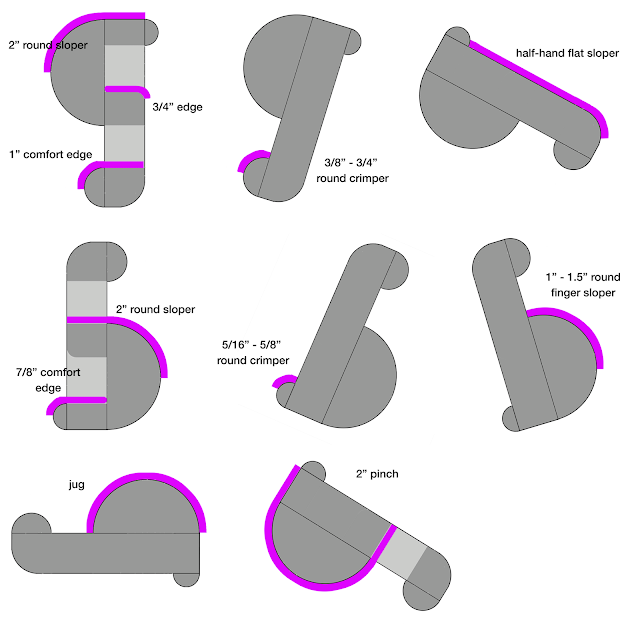
The following project gives the basic steps I used in creating the Squeeze Box, an adjustable crack hangboard. Here are some of it's features:
- adjustable up to OW (hand-fist stack)
- hangs from one or two suspension points
- option of mounting a hangboard or holds on the two outside surfaces
- can be hung vertical or horizontal
- adjustable for parallel, incut or flared crack
- angle of board can be adjusted to make crack/holds easier or harder.
- fairly reasonable cost to build
The board is based on a set of Jorgensen #1 wood clamps that I obtained on Ebay. I think I paid around $16 for the set. Since I wanted the board width to be 8", the ends of the clamps were cut off. For my hands 8" is plenty wide, though they could be left full size.
In order to get the clamps apart (normally they are designed so they can't be disassembled), approximately 3/8"-1/2" is cut off the end of one of the threaded rods of each clamp. This allows the clamps to be disassembled when fully unscrewed. The clamps need to be disassembled in order to attach to the wood plates.
For the wood plates I used two layers of 3/4" plywood glued and screwed together. This also allows T-nuts to be added should you desire to use bolt-on holds. Overall dimensions the plates are 8" x 25". The width should be adjusted to fit the hangboard, if you plan on attaching one. I would suggest the ideal size could range between 24"-27". One half of each plate is 3" shorter to make a lap joint where the wood clamps are attached. Notice the holes drilled for the wood clamp threaded rods to pass through. (Note: 2 x 10 pine lumber [1 1/2" x 9 1/4" actual size] could be used instead of plywood, however you'd need a table saw and dado blade to cut the lap joint notches on the end of the plates.)
The two halves of peach plate are then screwed and glued together, making sure that the screws are screwed from the outside so the inside surfaces of the crack remain smooth. Shown below are both finished plates (one of the plates has the Continuum Board attached (discussed in a prior blog post).
This shows the wooden clamps attached with glue and two large wood screws.
Clamps reassembled to form the basic Squeeze Box frame. Notice also the bottom inside edges of the crack were rounded for comfort
A 10' strap from Strampworks.com was used to provide the sling. The strap was cut as shown below and ends were doubled and a screw hole burned through both layers with a hot nail. They were then attached with 1 1/2" long wood screws with heavy 1" washers. The angle of hangboard is adjusted by changing the hang loop length on the quick-release buckle side.
Finished Squeeze Box hangboard. It can be hung from one or two points. For a Horizontal mount, two suspension points provides more stability. For vertical orientation, it is hung from a single suspension point.
Note: The inside crack surface was left as natural wood. Texture could be added via fine grit sandpaper or a textured paint. However, caution should be used as if intensive training is done on it, hands could easily be abraded. I've chosen to use it with tape or crack gloves.




























